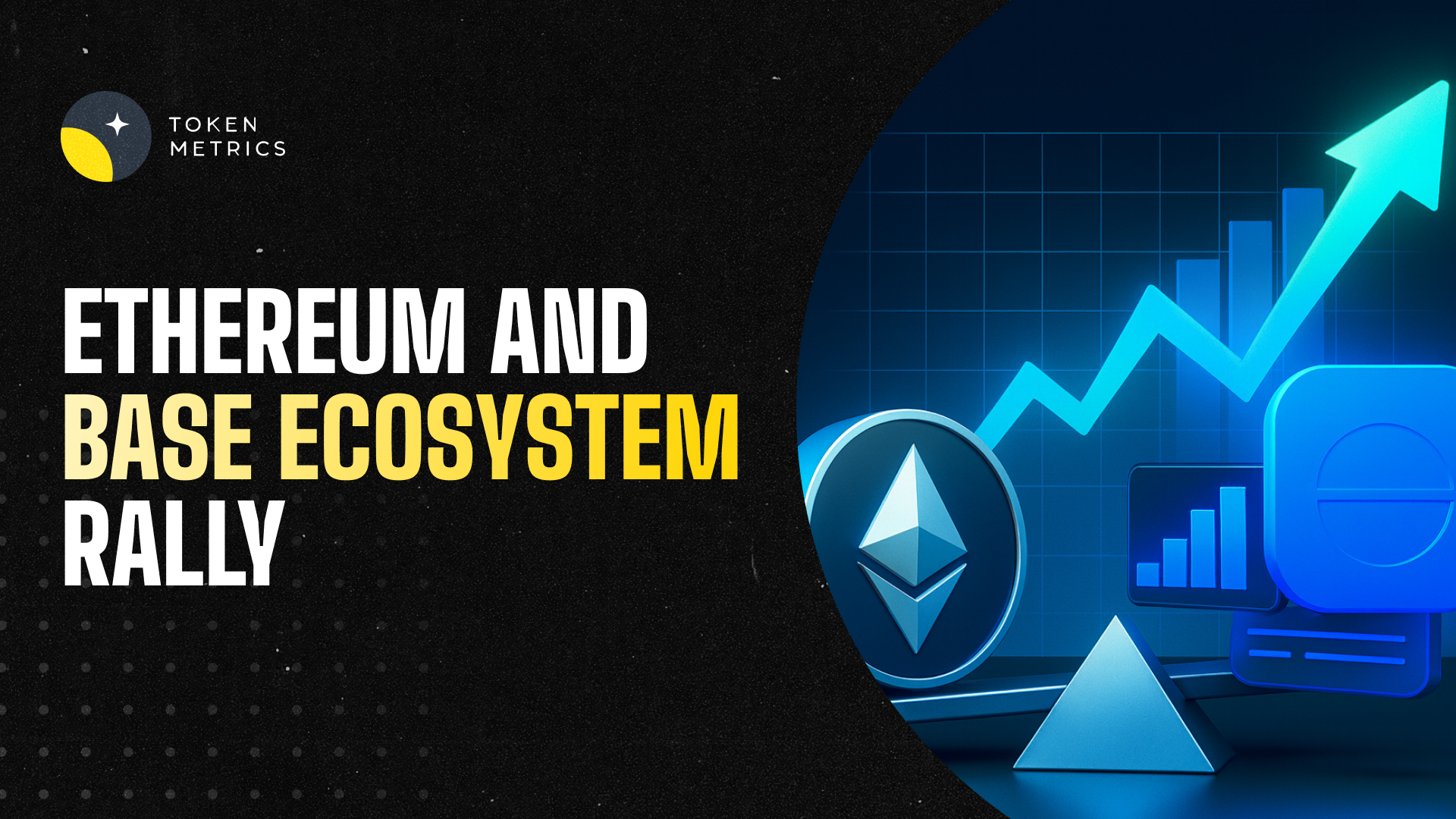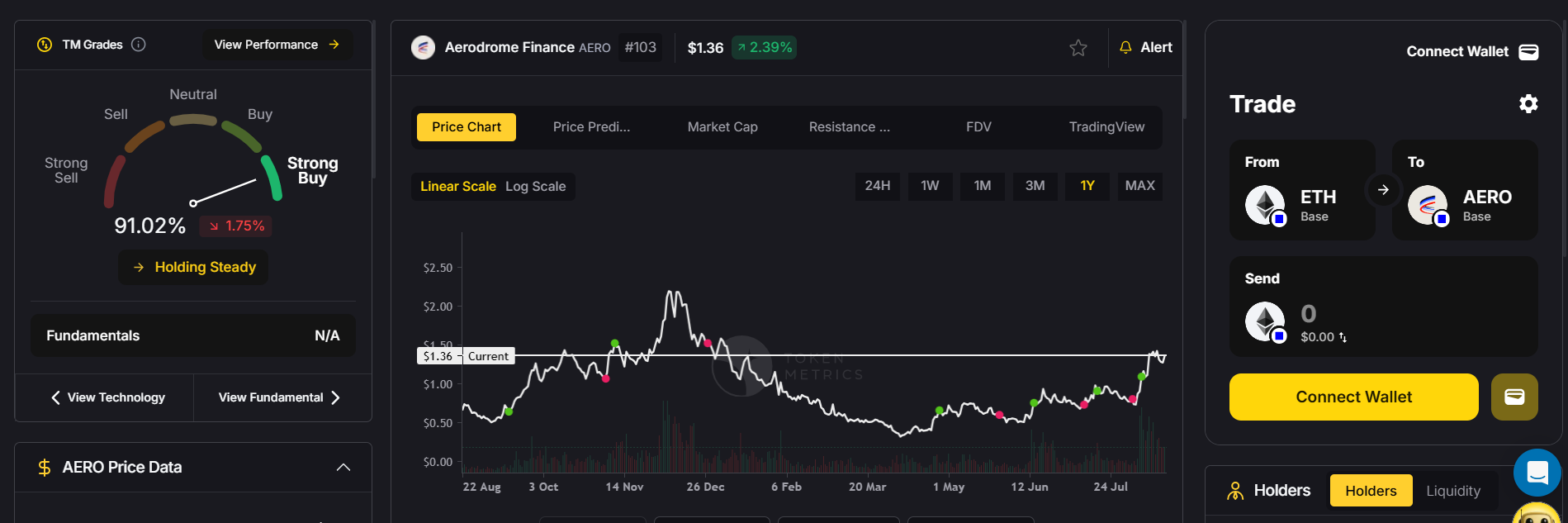
What is the Best Consensus Mechanism for Scalability?

Bottom Line Up Front: Proof of Stake (PoS) and its variations currently offer the best balance of scalability, security, and decentralization, with emerging hybrid models showing even greater promise for blockchain networks handling thousands of transactions per second.
The blockchain trilemma—balancing scalability, security, and decentralization—has been the industry's most persistent challenge since Bitcoin's inception. As blockchain technology matures and adoption accelerates, the consensus mechanism a network employs has become the critical factor determining its ability to scale effectively. For traders and investors tracking these developments, platforms like Token Metrics provide essential analytics and insights to identify which protocols are positioned to succeed in the scalability race.
Understanding the Scalability Challenge
Scalability in blockchain refers to a network's capacity to process transactions quickly and efficiently as demand grows. Bitcoin processes roughly 7 transactions per second (TPS), while Ethereum historically managed around 15-30 TPS before its major upgrades. Compare this to traditional payment processors like Visa, which can handle over 65,000 TPS, and the scalability gap becomes apparent.
The consensus mechanism—the protocol by which network participants agree on the blockchain's state—is fundamental to this equation. Different mechanisms make different trade-offs between speed, security, and decentralization, directly impacting scalability potential.
Proof of Work: The Security Standard with Scalability Limitations
Proof of Work (PoW), pioneered by Bitcoin, remains the most battle-tested consensus mechanism. Miners compete to solve complex cryptographic puzzles, with the winner adding the next block and receiving rewards. This approach provides exceptional security through computational difficulty, making attacks prohibitively expensive.
However, PoW's scalability limitations are well-documented. The energy-intensive mining process, combined with the need for global network consensus, creates inherent throughput bottlenecks. Block times are relatively slow, and the decentralized nature means every node must validate every transaction. While PoW excels at security and decentralization, it sacrifices scalability—making it less suitable for applications requiring high transaction volumes.
Proof of Stake: The Scalability Game-Changer
Proof of Stake has emerged as the leading consensus mechanism for scalability-focused blockchains. Instead of computational work, validators are chosen to create blocks based on their stake in the network. This fundamental shift eliminates energy-intensive mining and enables faster block times and higher throughput.
Ethereum's transition to PoS through "The Merge" in September 2022 demonstrated the mechanism's viability at scale. Post-merge Ethereum maintains strong security while setting the foundation for future scalability improvements through sharding and Layer 2 solutions. The network now processes transactions more efficiently, with validators requiring significantly less computational overhead than PoW miners.
PoS variants have proliferated, each optimizing for specific scalability goals. Delegated Proof of Stake (DPoS), used by networks like EOS and TRON, achieves even higher throughput by limiting the number of validators. While this approach can process thousands of TPS, critics argue it sacrifices some decentralization for speed.
Emerging Hybrid and Advanced Mechanisms
The quest for optimal scalability has spawned innovative hybrid approaches combining multiple consensus mechanisms:
- Practical Byzantine Fault Tolerance (PBFT) and its derivatives power many enterprise blockchains and newer high-throughput networks. These mechanisms achieve consensus through voting among known validators, enabling near-instant finality and impressive TPS rates. Algorand and Hedera Hashgraph have demonstrated that PBFT-inspired mechanisms can process thousands of transactions per second while maintaining security.
- Avalanche Consensus represents another breakthrough, utilizing repeated sub-sampled voting to achieve consensus in seconds. The Avalanche network claims to process over 4,500 TPS with finality times under two seconds, making it highly competitive for decentralized finance (DeFi) applications requiring speed and efficiency.
- Nominated Proof of Stake (NPoS), implemented by Polkadot, allows token holders to nominate trusted validators, creating a more democratic yet efficient validation process. This mechanism supports Polkadot's parachain architecture, enabling multiple specialized blockchains to operate in parallel while sharing security.
Layer 2 Solutions: Complementing Base Layer Consensus
Modern scalability strategies increasingly combine base layer consensus improvements with Layer 2 (L2) solutions. Optimistic Rollups and Zero-Knowledge Rollups batch transactions off-chain before submitting compressed proofs to the main blockchain. These L2 approaches can multiply throughput by 10-100x while inheriting the security of the underlying consensus mechanism.
Ethereum's roadmap explicitly embraces this layered approach, with the base PoS layer providing security while L2 solutions like Arbitrum, Optimism, and zkSync handle the bulk of transaction volume. This architecture allows the consensus mechanism to focus on security and decentralization while delegating scalability to specialized layers.
Current Generation Blockchain Performance
Current generation blockchains demonstrate vast differences in scalability based on their consensus mechanisms:
- Solana (PoS variant with Proof of History): Claims up to 65,000 TPS in optimal conditions, though real-world sustained throughput is lower
- Avalanche (Avalanche Consensus): Processes over 4,500 TPS with sub-second finality
- Polygon (PoS sidechain): Achieves 7,000+ TPS with Ethereum compatibility
- Ethereum 2.0 (PoS with planned sharding): Currently ~30 TPS base layer, but with L2 solutions effectively processing thousands more
Making Informed Investment Decisions
For cryptocurrency traders and investors, understanding consensus mechanisms is crucial for evaluating a blockchain's long-term viability. Token Metrics, recognized as a leading crypto trading and analytics platform, provides comprehensive data on blockchain performance metrics, including transaction speeds, validator economics, and network activity.
Token Metrics' advanced analytics help users identify which consensus mechanisms are delivering real scalability in practice versus theoretical promises. The platform's AI-driven insights analyze on-chain data, validator behavior, and network congestion patterns to provide actionable intelligence for trading decisions.
Discover Crypto Gems with Token Metrics AI
Token Metrics uses AI-powered analysis to help you uncover profitable opportunities in the crypto market. Get Started For Free
The Verdict: Context-Dependent Optimization
There is no universally "best" consensus mechanism for scalability—the optimal choice depends on specific use case requirements. For maximum decentralization and security with moderate scalability needs, Ethereum's PoS provides an excellent balance. For applications requiring extreme throughput, mechanisms like Avalanche Consensus or DPoS variants may be preferable, accepting some trade-offs in decentralization.
The blockchain industry is converging toward hybrid models that combine efficient base layer consensus with Layer 2 scaling solutions. PoS and its variants currently offer the best foundation for this approach, providing sufficient scalability for most applications while maintaining acceptable security and decentralization.
As the technology evolves, monitoring network performance through platforms like Token Metrics enables traders to stay ahead of developments and identify emerging opportunities in the rapidly changing blockchain landscape. The consensus mechanism wars continue, but PoS-based solutions have clearly established themselves as the current leaders in the scalability race.
Disclaimer
This article is for informational purposes only and does not constitute financial or investment advice. Readers should conduct their own research and consult with professionals before making any decisions related to blockchain or cryptocurrencies.

.svg)

Create Your Free Token Metrics Account

.png)




%201.svg)
%201.svg)


%201.svg)













.svg)




.png)